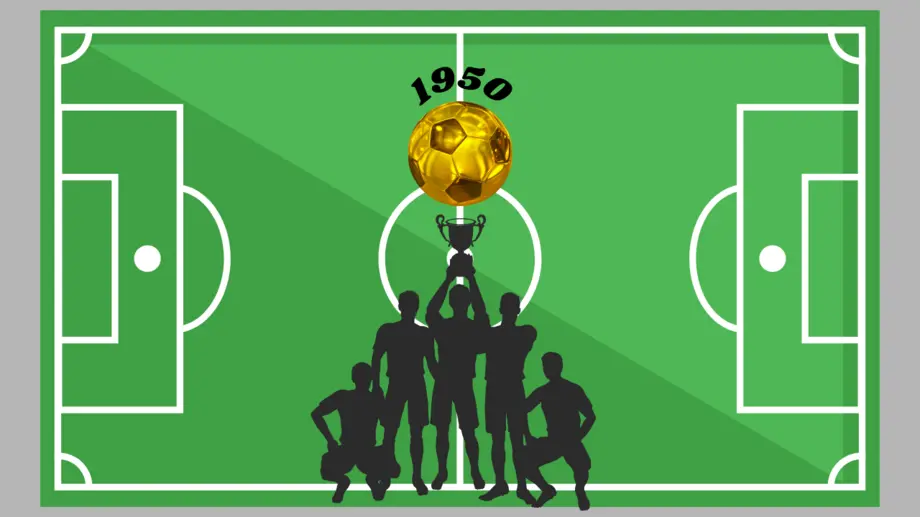1950 FIFA World Cup.
The 1950 FIFA World Cup was the fourth edition of the largest men’s football tournament with national teams. Organized by FIFA, the competition took place in Brazil, with six host cities, beginning on June 24th and ending on July 16th. Come and learn about The 1950 World Cup: the Maracanazo.
The 1950 World Cup Venue Selection.
Due to World War II, the World Cup had not been played since 1938; the 1942 and 1946 World Cups were cancelled. After the war, FIFA wanted to resume the competition as soon as possible, and began planning for the next cup. In the post-war period, most of the European continent was destroyed. As a result, the International Football Federation had some difficulties in finding any country interested in hosting the competition.
For some time, the World Cup was in danger of not being held due to a lack of interest from the international community, until Brazil submitted a proposal to the 1946 Congress of the International Football Federation, offering to host the event, which was originally planned for 1949. Brazil and Germany had been the leading candidates for the cancelled 1942 World Cup. The new Brazilian proposal was very similar to the 1942 proposal and, due to the context, was quickly accepted.
For the 1950 World Cup, stadiums were built, among them Maracanã, which, at the time, was the largest stadium in the world.
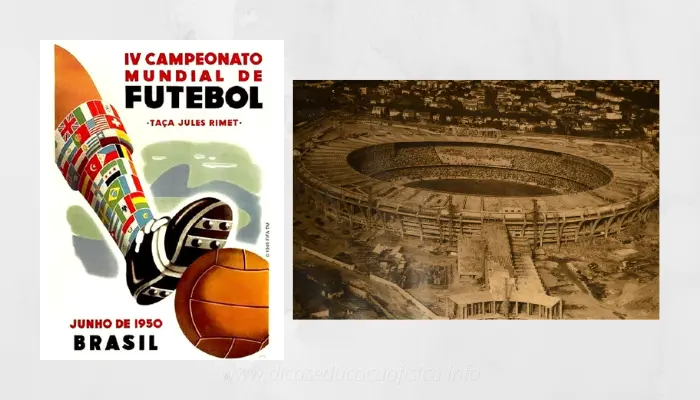
The 1950 World Cup Host Cities and Stadiums
Six cities hosted the 1950 World Cup:
-
Belo Horizonte:
Raimundo Sampaio Stadium (Independência Stadium) was built for the 1950 World Cup and hosted 3 matches in the competition.
-
Curitiba:
The Durival Britto e Silva Stadium (Vila Capanema) hosted 2 games.
-
Porto Alegre:
The Eucaliptos Stadium had a capacity of 20,000 people. The complex, which hosted two games of the competition, and was demolished in 2012.
-
Recife:
The Adelmar da Costa Carvalho Stadium (the Ilha do Retiro), was remodeled for the competition and had a capacity, at the time, of 20 thousand people. The stadium hosted two games.
-
Rio de Janeiro:
The Jornalista Mário Filho Stadium (the Maracanã) was built for the World Cup and was intended to be the largest stadium in the world. The main stage of the World Cup had a capacity, at the time, of 200 thousand people and hosted 8 games, among them 4 of the Brazilian National Team and the final game of the cup.
-
São Paulo:
Paulo Machado de Carvalho Stadium (the Pacaembu) was the second largest stadium in the World Cup, with a capacity, at the time, of 60 thousand people. It hosted 6 games.
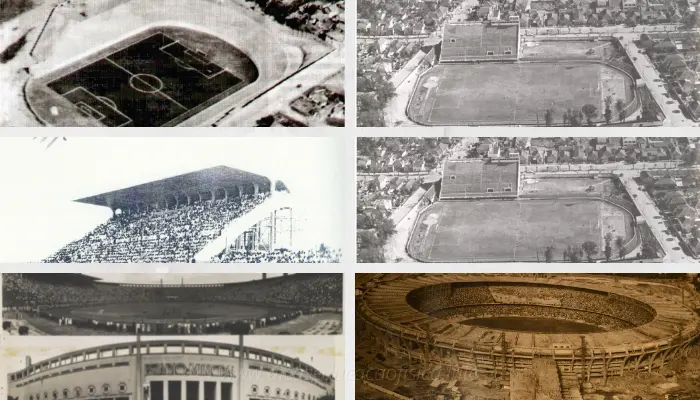
The 1950 World Cup Qualifiers
After the selection of the host country, FIFA would still spend some time convincing countries to send their national teams to compete. Italy, winners of the 1938 World Cup, was a very important presence, but the country was rebuilding after the end of World War II and there was little interest from the Italians to sign up. The Italians were persuaded to participate, but it is rumored that FIFA had to fund the travel costs so that the Italian national team could travel to Brazil.
Japan, still under occupation, and occupied and divided Germany were not yet allowed to compete due to post-war sanctions.
The British nations were able to compete, after 17 years of self-exile, rejoined FIFA. The 1949-50 British Home Championship would serve as a knockout competition, with the champion and runner-up qualifying. England finished first and Scotland second, but the Scots opted out of the cup.
Two other teams, Turkey and India, also dropped out after qualifying. France and Portugal were invited to replace their places, but declined. As a result, of the 16 teams originally expected to qualify, only 13 participated in the tournament.
Participating Countries in the 1950 World Cup
Sixteen national teams were qualified to participate in the 1950 World Cup, 8 of them being European (Italy, Sweden, Switzerland, Spain, Yugoslavia, England, Scotland, and Turkey), 7 American (Brazil, Uruguay, Chile, Paraguay, Bolivia, United States, and Mexico), and one Asian (India).
The teams from India, Turkey and Scotland withdrew from the competition; group 4 was left with only two teams: Uruguay and Bolivia and group 3 with three teams: Sweden, Italy and Paraguay.
The 1950 World Cup Games
Draw and the ’50 World Cup Pool Headliners
The draw was held at Itamaraty in Rio de Janeiro on May 22, 1950.
The heads of the 1950 World Cup were Brazil, England, Italy, and Uruguay.
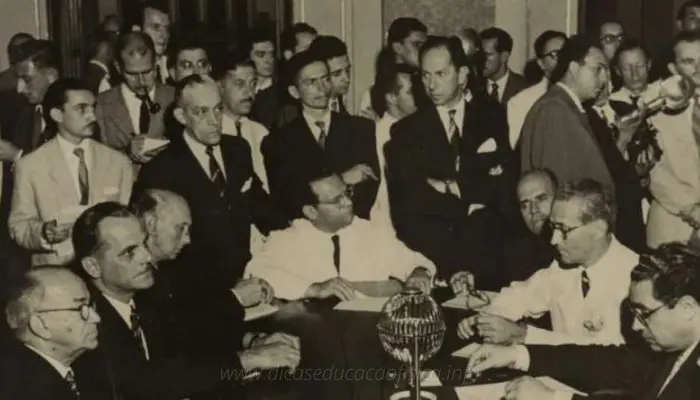
1950 World Cup Formula
The 1950 World Cup was played in two phases: the group phase was the first phase, with 4 groups, where the winner of each group would advance to the final quadrangular, the second phase.
Attention!
Contrary to what many people think, the 1950 World Cup did not have two finalists, but rather 4 finalists who competed in the Final Four.
The First Stage of the 1950 World Cup: Group Stage
Group 1 consisted of Brazil, Mexico, Switzerland, and Yugoslavia. Brazil was the winner of the group with two wins and a draw with Switzerland.
Group 2 was made up of Spain, England, Chile, and the United States. Spain was the winner of the group, with three wins.
Group 3 was made up of Sweden, Italy, and Paraguay. Sweden was the winner of the group with one win and one draw.
Group 4, due to withdrawing teams, was formed only by Uruguay and Bolivia. Uruguay advanced with ease, beating Bolivia 8-0.
Italy, then two-time world champions, were eliminated in the first round, but the team was not the same as before due to the tragic plane crash that killed the entire Torino team, the base of the Squadra Azurra.
In the final, a unique quadrangular match: Brazil, Sweden, Spain, and Uruguay.
1950 World Cup Final Four
In the final phase, a unique quadrangular round of matches in World Cups: Brazil, Sweden, Spain, and Uruguay.
Brazil beat Sweden 7-1 and Spain 6-1, and were considered big favorites to win the World Cup.
Uruguay, on the other hand, drew 2-2 with Spain and beat Sweden 3-2, and would go into the final match with a chance to become champions if they beat the favored Brazilian team.
The 1950 World Cup Final: “the Maracanazo”
On July 16, in front of an audience of 199,954,000 people (some estimate around 205,000 people) packed into the Maracanã stadium, Brazil only needed to draw with Uruguay to win the World Cup.
The last match was coincidentally between the first and second placed teams, who until then had not lost in the competition.
Brazil, backed by their excellent campaign and supported by their fans, opened the scoring in the second minute of the second half with a goal by Friaça. Uruguay, in the 21st minute, tied the game with Juan Alberto Schiaffino. A draw would still give the Brazilians the title of the competition. And in the 34th minute, Alcides Ghiggia turned the scoreboard around for the Uruguayans, silencing the Maracanã stadium and giving the Uruguayans their second world title.
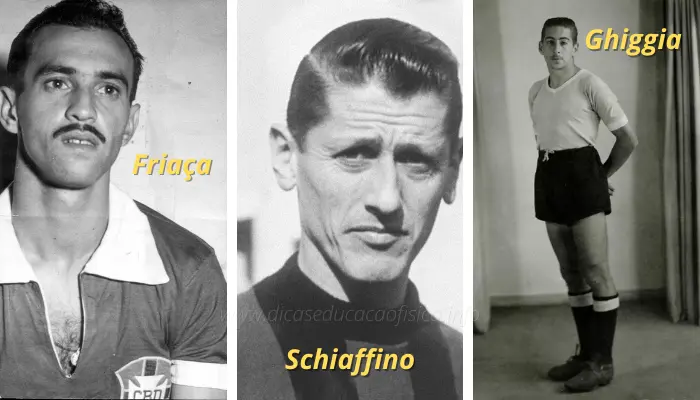
This match became known as “Maracanazo” and had the largest audience of all the matches in all the World Cups: 199,854 people (officially). It is also considered one of the biggest disappointments in the history of Brazilian football.
What is the term “Maracanazo” of the 1950 World Cup?
The final match of the 1950 World Cup is known as “Maracanazo”, derived from a Latin expression (in Spanish: Maracanazo) used by the opponents to provoke the Brazilians.
The Top Scorer of the 1950 World Cup
With 9 goals, Ademir de Menezes was the top scorer of the 1950 World Cup.
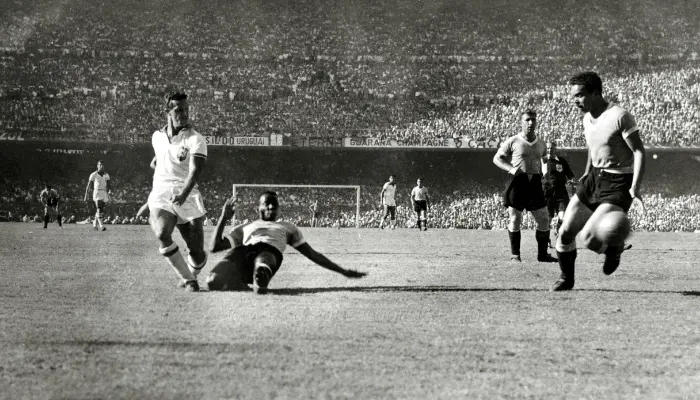
The Highlights of the 1950 World Cup
The standout players of the 1950 World Cup were: Roque Máspoli, Obdulio Varela, Alcides Ghiggia, and Juan Schiaffino for Uruguay, and Ademir de Menezes, Zizinho, Jair da Rosa Pinto, and José Carlos Bauer for Brazil.
Uruguay 1950’s National Team
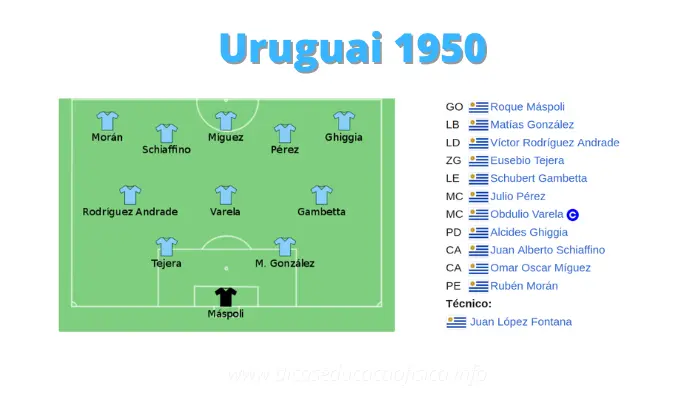
World Cup Series:
- 16 Curiosities of the World Cup
- Episode 01: World Cup of 30
- Episode 02: World Cup of 34
- Episode 03: World Cup of 38
BIBLIOGRAPHIC REFERENCES
DUARTE, Orlando. Enciclopédia: Todas as Copas do Mundo. São Paulo: Makron Books, 1998.
FIFA. 1950 FIFA World Cup Brazil. Available at: < http://www.fifa.com/worldcup/archive/brazil1950/index.html >. Accessed on: 15/01/2018
